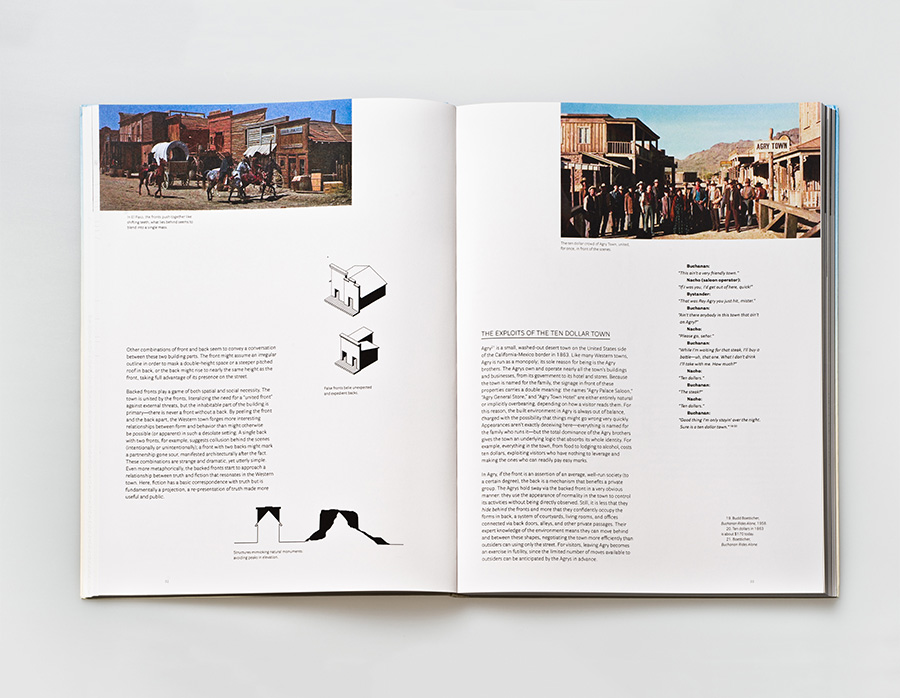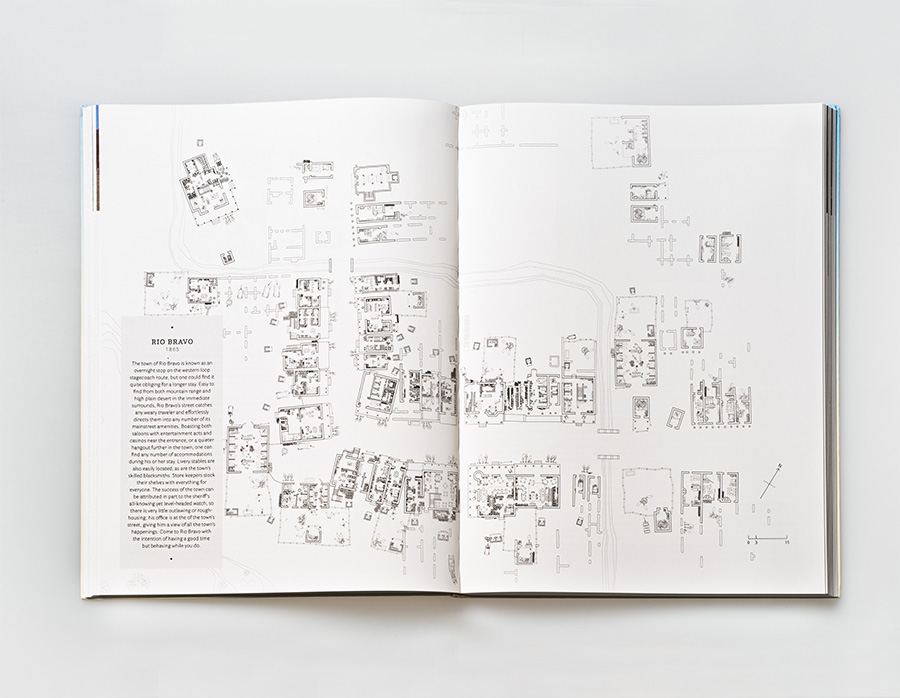The Western Town – A Theory of Aggregation

The Western Town – A Theory of Aggregation
The Western town of roughly 1860–90 exists in an ephemeral moment in American history. Always being realized but never really there, these towns vanished entirely from the prairie by the end of the nineteenth century. Yet even today everyone has visited these towns since they survive in their abstract and distilled form through the plot-generating sets of Western movies. Somehow this (re)constructed reality is able to support these plots inherently, completely, and inexhaustible. From the Great Plains west of the Mississippi to the foothills of the Sierra Madre, the towns of Agry Town, Rio Bravo, Sweetwater, and many more are home to an unflinchingly regular set of formal arrangements, typologies, and social interactions—in other words, a clichéd but consistent host of characteristics and characters. The Western town’s integral pieces suggest that behind its simplicity lies a rich source for architectural and urban study.
The Western Town: A Theory of Aggregation retells the story of twenty-two Western towns architecturally, from the scale of the lace curtain or sunbleached wood coffin to the vast, empty desert, not in order to catalog their architectural and urban features, but rather to appreciate the slight connections, overlaps, and reciprocities between these elements. The book includes detailed maps of towns from the following films, among others: A Fistful of Dollars (1964), Buchanan Rides Alone (1958), For a Few Dollars More (1965), Fort Apache (1948), Hang ‘Em High (1968), High Noon (1952), High Plains Drifter (1973), Major Dundee (1965), McCabe and Mrs. Miller (1971), Ride the High Country (1962), Rio Bravo (1959), Rio Grande (1950), Stagecoach (1939), The Alamo (1960) and The Wild Bunch (1969).
- Commissioner: Alex Lehnerer
- Year: 2013
- Author: Alex Lehnerer, Jayne Kelley, Jared Macken, and Lorenzo Stieger
- Publisher: Hatje Cantz
- My role: Book design, layout and type setting.
- Buy on Amazon



